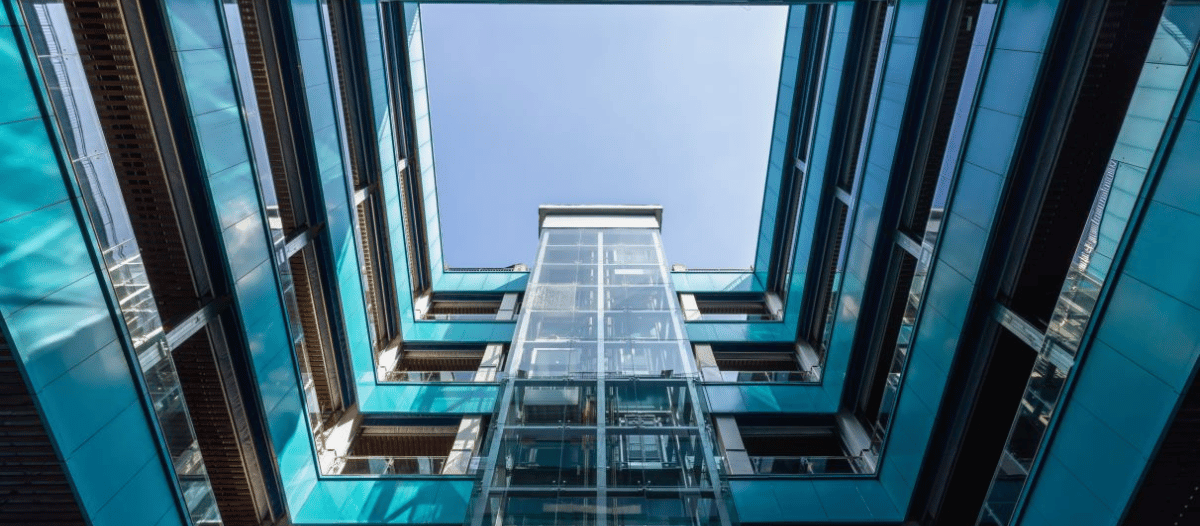Future-proofing Space
Using redefined sustainability solutions

Meeting sustainability and ESG (Environmental, Social and Governance) targets is top of mind for building leaders, but as concerns over building management and maintenance costs continue to escalate globally, owners and operators are scrambling for efficient green solutions that do not impact the bottom line. By incorporating environmentally safe and non-toxic technology solutions into disinfection strategies, facility leaders can target both efficiency and energy savings without sacrificing occupant health and comfort.
The benefits of building green
Buildings are the largest, most resource intensive product on the planet, responsible for a massive 40 percent of global energy consumption and more than 30 percent of greenhouse gas emissions. The land needed for cities, the materials and water needed for buildings, and the waste generated by buildings are putting a strain on global resource health. Green building strategies and net zero approaches hold the promise to minimize the adverse impact of buildings on natural systems and resources.
Typically, green buildings are eco-friendly and contain non-toxic materials obtained from natural and renewable sources that are handled sustainably. While the belief persists that constructing green buildings is cost-prohibitive and delivers only a modest investment, the opposite is true. Green building costs 2 percent more to build on average but can save 14 to 19 percent in operational expenditures. For owners and developers, green buildings result in 3 percent higher rent premiums, 7 percent higher cash flow, as well as higher occupancy rates.
While these bottom-line numbers are compelling, what is even more compelling is the positive impact on the health and well-being of people who live and work in green buildings:
- Tenants and employees in green buildings regularly report better indoor air quality and fewer sick building syndromes such as dizziness, fatigue and respiratory problems.
- Less crowding and improved ventilation in green buildings reduces the transmission of infectious diseases, with studies showing that employees sharing an office are 20 percent more likely to develop a cold at least twice a year.
- Green buildings are effective at inhibiting the transmission of infectious diseases. Doubling the amount of ventilation in an office space can increase worker productivity by US$6,500 per employee each year, compared to just US$14-$40 it costs per employee to improve ventilation.
- According to a World Green Building study, working in well-ventilated environments improves brain function by 101 percent.
Green buildings also have far-reaching economic benefits, with the green construction sector set to create 160,000 new jobs in the EU alone. In the U.S., the green market is expected to reach US$103.08 million by the end of 2023, as investment in energy efficient buildings continues to climb.
Reducing greenhouse gas emissions in construction: The basics.
When it comes to greenhouse gas emissions (GHG) in the construction of green buildings, there are many nuances to consider. The production of some building materials such as concrete and steel can generate large amounts of carbon emissions, while the production of other materials such as timber and recycled materials can generate fewer emissions. This should be considered in the initial construction planning. Eco-friendlier solutions should be compared against all materials, PPE, chemicals and the energy consumed by the building systems such as heating, ventilation and air conditioning (HVAC). The transportation and disposal of materials is also another factor that can impact a building’s GHG footprint.
By selecting materials, PPE, chemicals and energy sources that have a lower GHG footprint, building leaders can reduce the overall environmental impact of their buildings, improve overall sustainability and ensure people living and working in these buildings have better air quality.
There is little doubt green buildings will form the cornerstone of constructing more sustainable cities, offices, public spaces and homes in the future. This push for more eco-friendly buildings is a direct result of the landmark Paris Agreement and the aggressive goals to significantly reduce greenhouse gas emissions over the next two decades. One thing nobody could have predicted back when the agreement was made in 2015 was the crippling and continuing aftershocks of a global pandemic.
The persistence of the pandemic
COVID-19 and climate-related events have taken a big toll on the world over the past few years and continue to do so as countries battle new outbreaks and spikes. During the height of the pandemic, construction sites were left empty for months and supply chain disruptions impacted material production and shipping. An interesting fact is that during the pandemic peak, emissions from buildings decreased by 10 percent. However, this is a false positive. People worked from home remotely and commuted less, so offices were generating much less energy.
Following the pandemic and the Environmental Protection Agency’s Clean Air in Buildings Challenge, it is evident that more action needs to be taken on improving indoor air. In December of 2022, ASHRAE officially set a six-month timeline for a new national IAQ pathogen mitigation standard focusing on improving healthier indoor spaces for everyone. And, as more people return to the workplace and offices power up their heating, cooling and lighting systems, accelerating the imperative to ensure buildings are as eco-friendly and efficient as possible, not just for reducing energy consumption as it is expected for emissions to trend upward again, but also for improving the health and air quality of occupants. While this futureproofing may sound like a daunting task in the wake of persistent inflation, supply chain challenges and global uncertainty, taking a layered approach to green building management is a smart concept, sure to pay dividends over time.
Laying the groundwork
Adopting a layered approach, combining both innovative technologies and HVAC, can help create more sustainable spaces and lower a building's carbon footprint. This layered concept is beneficial for sustainability and can positively affect the health of occupants.
What are the core principles of a layered approach, and what non-toxic and sustainable disinfection strategies should facility leaders consider when looking to future-proof their investment?
With IAQ being a new standard priority for occupants, layering sustainable disinfection solutions is the best way to improve IAQ without compromising energy consumption or occupant comfort – the next step in future-proofing a facility. When thinking about what already exists in a typical building, heating, ventilation and air-conditioning (HVAC) systems immediately come to mind. Smart HVAC systems are designed to move air around based on occupancy levels and can minimize energy output depending on demand, but they were not designed to disinfect the air or improve IAQ. Unlike other methods of disinfection that deactivate microorganisms in a room, HVAC simply moves the harmful microorganisms around and stores them in disposable filters within the HVAC system. But there is a science- and data-driven method of disinfection that works together with HVAC to bring indoor air quality up to the new expected standards.
Chemical free, climate friendly: UVC shines bright in disinfection solutions
UVC is a type of ultraviolet light with wavelengths between 200-280 nanometers (nm). It is known for its germicidal properties, which means it is effective at killing or inactivating microorganisms such as bacteria and viruses. UVC solutions use ultraviolet light to disinfect, without the need for chemicals, filters, wipes and other forms of waste. So, how would this work alongside an already existing HVAC system? The UV light creates a disinfection zone and deactivates airborne particles as they rise in the air. As a layered approach to a building's HVAC systems, UV solutions can help raise indoor air quality standards to where they need to be more economically, sustainably and effectively than other methods of HVAC alone.
UVC light is simple and inexpensive to install, and some current devices do not require people to change their day-to-day behavior as certain far UVC can be used in high-traffic, occupied spaces. Evidence from multiple studies suggests it may be a safe way to prevent the transmission of viruses, including COVID-19 and its variants, as well as influenza and potential future pandemic viruses. The technology works by disinfecting surfaces and air by killing germs and bacteria on contact and is easily incorporated alongside HVAC systems to provide continuous disinfection, without the production of any harmful byproducts.
By using UVC technology, building managers can dramatically lower waste, chemical usage and energy to enable healthy, thriving environments that are safe and comfortable for occupants.
As building leaders look to sustainable solutions to futureproof spaces, a layered approach has distinct advantages from an economic and occupant health perspective. Constructing a space from the ground up, integrating green building principles should be top of mind for architects, developers and builders alike. For building owners tasked with managing existing spaces, adopting best practices for proper ventilation and ensuring HVAC systems are fully functional are now table stakes when it comes to sustainability and occupant health. UVC technology is proving to be light years ahead in future-proofing spaces and significantly improving indoor health quality.

Dylan Jones is an author and writer with a heavy focus in facility management and solutions for healthy buildings. Jones also specializes in writing for the UVC technology space and its role in creating more sustainable buildings and healthier indoor spaces.
Read more on Project Management , Real Estate and Workplace
Explore All FMJ Topics









